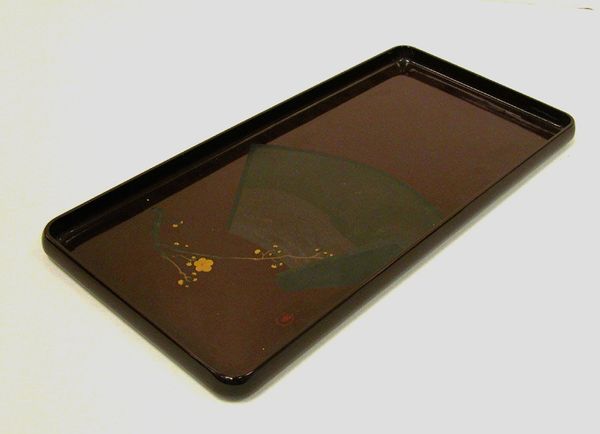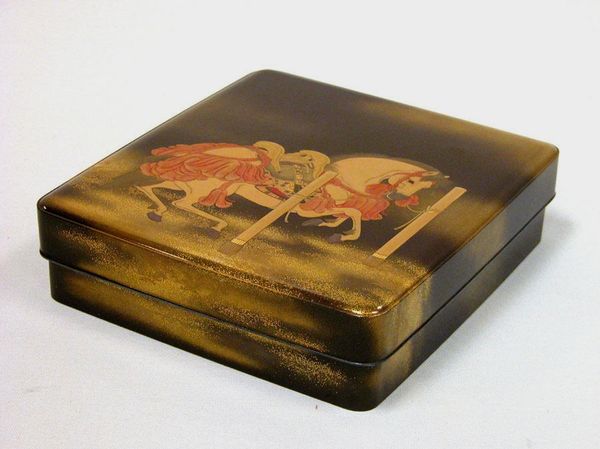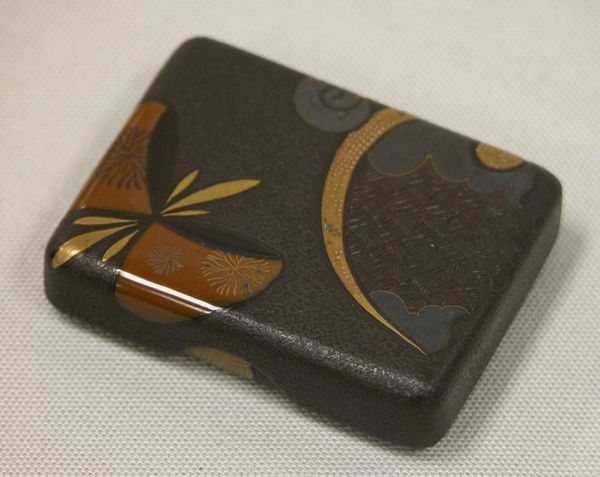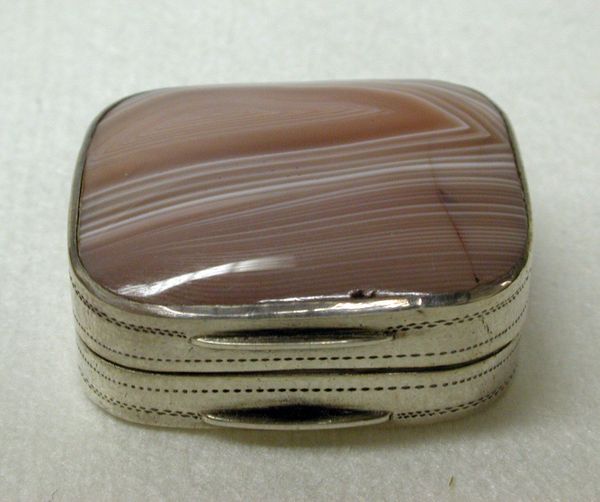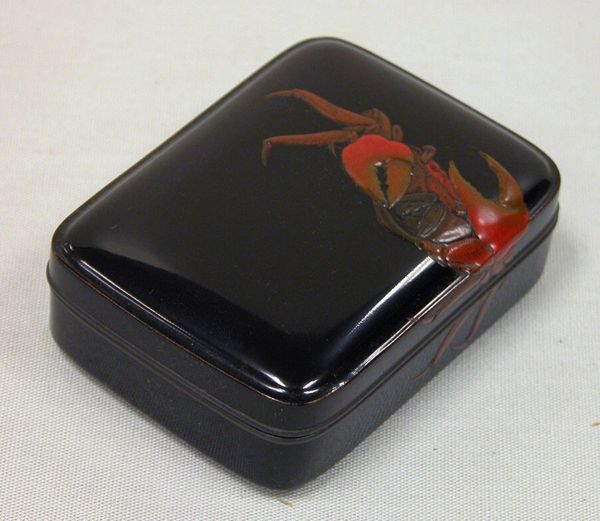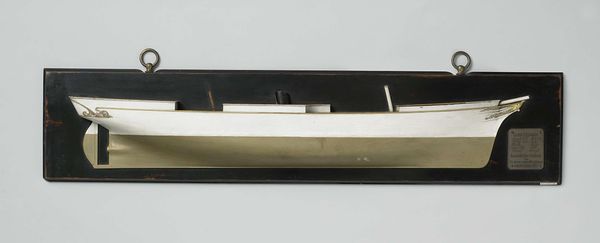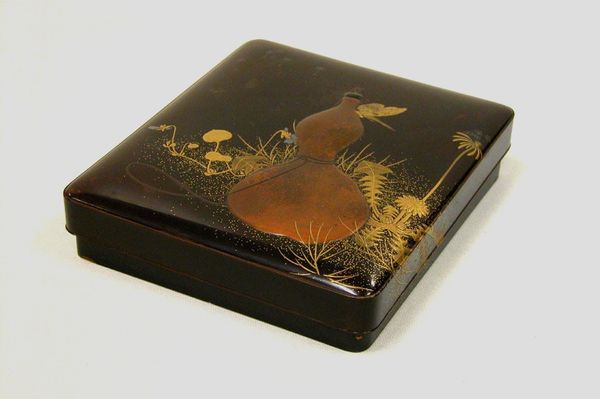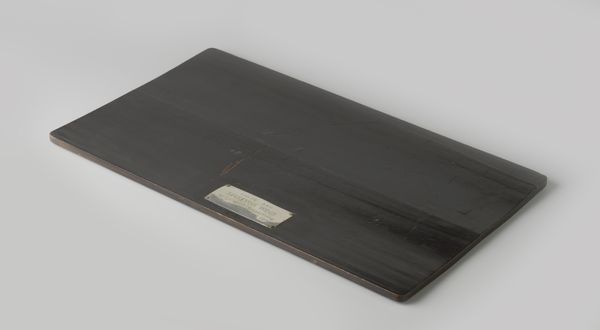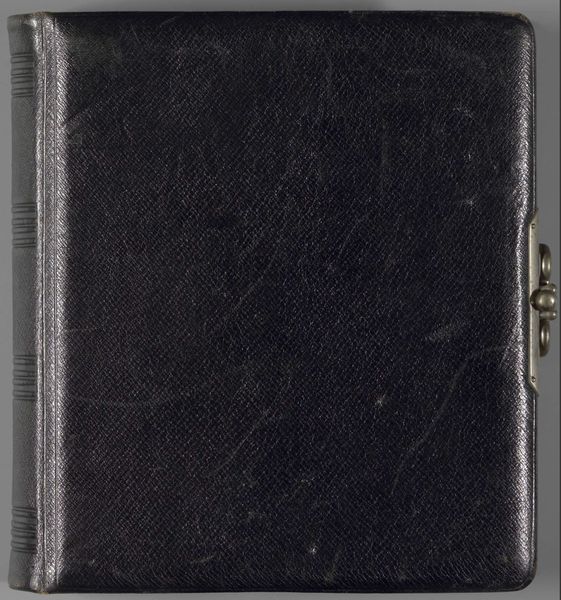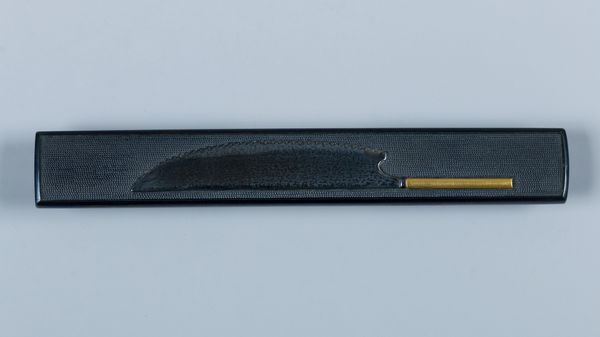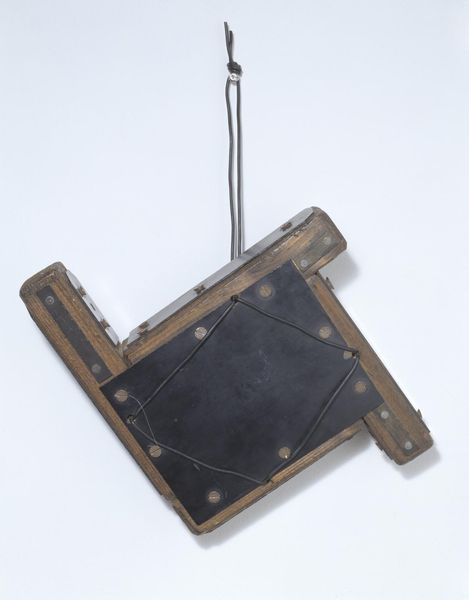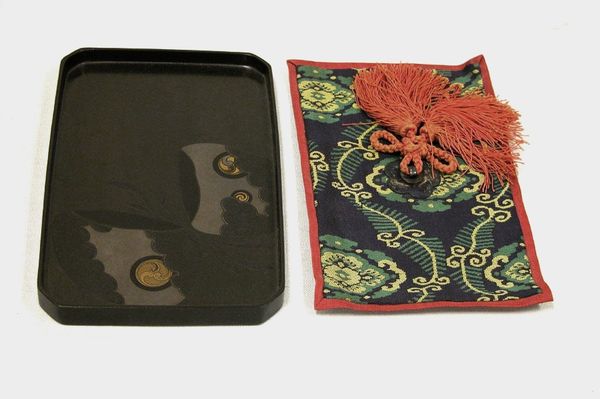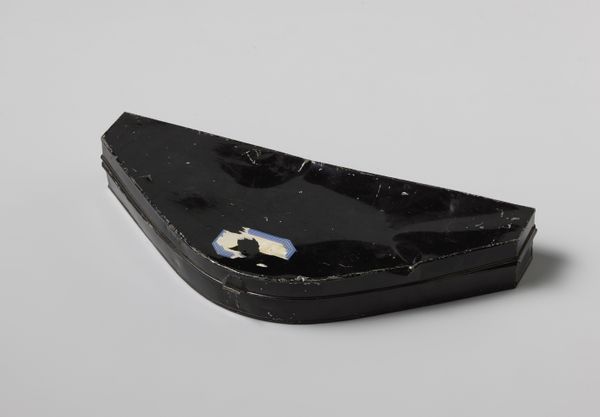
#
asian-art
#
24_meiji-period-1868-1912
#
decorative-art
Dimensions: H. 1/2 in. (1.3 cm); W. 3 5/16 in. (8.4 cm); L. 6 7/16 in. (16.4 cm)
Copyright: Public Domain
Editor: So, this is “Tray,” dating back to the 19th century, created by Shibata Zeshin. It's at the Met. It’s so simple, really, but I’m drawn to the understated elegance of the design. It's just a tray but those abstract shapes pull me in... what strikes you when you look at this? Curator: Ah, Zeshin! He was, to my mind, not just an artist, but a bit of a magician with lacquer. This "simple tray" as you call it, is anything but. Think of it: during the Meiji period, artists were wrestling with tradition versus modernity. Zeshin chose to elevate the everyday – like this tray - turning functional objects into poems. Editor: A poem? How so? Curator: Well, look closer. Do you see how those seemingly random gold and brown streaks dance across the surface? They evoke calligraphy, maybe fleeting memories. Zeshin, he understood *ma* – the power of empty space. He’s suggesting so much with so little. Also, this isn't just decorative, it invites touch and interaction! How incredibly daring for the time! Editor: I guess I didn't notice how interactive it can be, it does seem so peaceful just standing there. What did people usually put on it back then? Curator: Precisely. Tea sets, sweets, perhaps a solitary bloom. It’s a stage for everyday life, but transformed by art. A constant contemplation in material form! Editor: That gives me a new perspective; it is so nice to imagine someone interacting with it and even creating art with it as a backdrop. Curator: Exactly. The point wasn't just decoration; it was about creating a moment of beauty in the ordinary. The Japanese call it *mono no aware*- "the pathos of things". I find such appreciation of our materials so incredibly insightful!
Comments
No comments
Be the first to comment and join the conversation on the ultimate creative platform.
